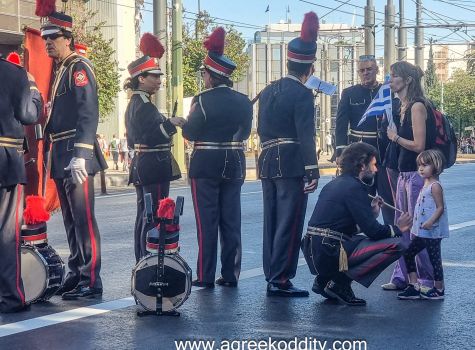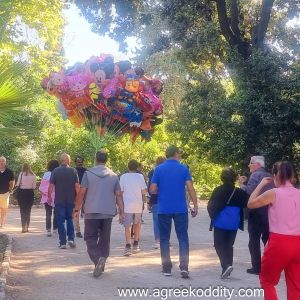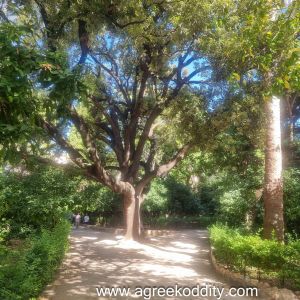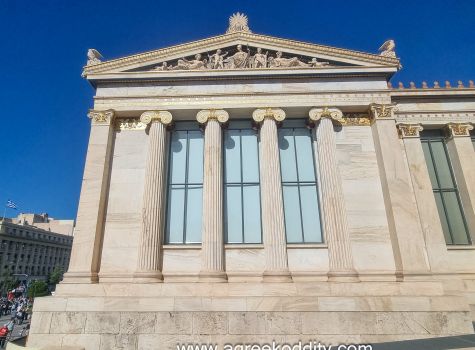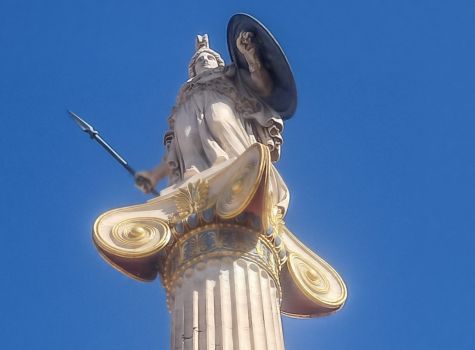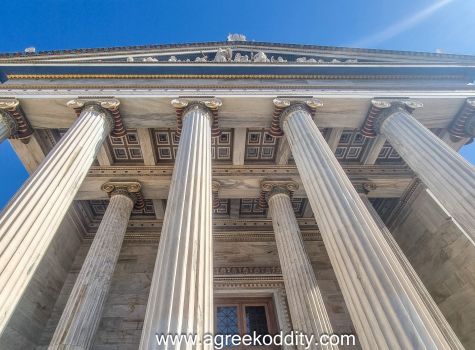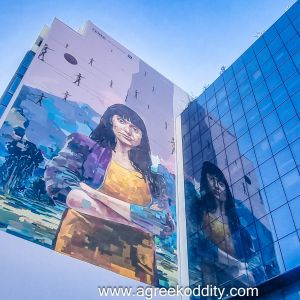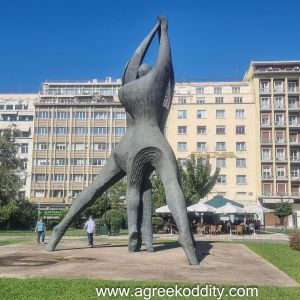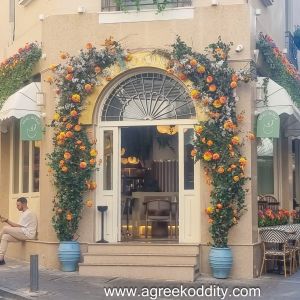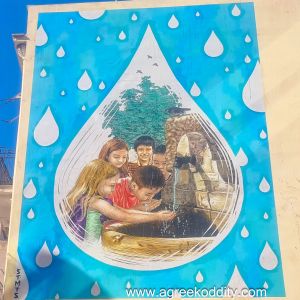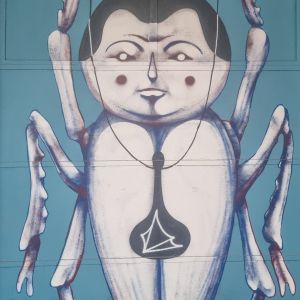OXI Day in Athens
Today is Oxi Day, celebrated in Greece every year on the 28th October. It commemorates the day when the Greek prime minister Ioannis Metaxas rejected an ultimatum given by the Italian dictator Benito Mussolini during World War II. (Written about in much more detail during my stay in Lesvos in 2022) https://agreekoddity.com/commemorating-oxi-day-and-a-sunset-dinner-in-molyvos/
A big military and cultural parade takes place in Thessaloniki with an impressive display of tanks and fighter jets. However, a show of civic pride takes place in almost every village and town around Greece with parades of school children varying sizes. I’m sure many of you have seen the newspaper article of the remote island of Mathraki where the sole student on the island, carries the flag as part of their Oxi day event. The size of the festivities is irrelevant. The same display of pride and patriotism is shown everywhere.
The march starts at 1100, so I head to Syntagma Square in good time. To an outsider, it all seems a little bit chaotic. I wanted to cross to the parliament side of the road. The police were doing their best to keep the road clear. I asked a policeman if I could cross. He told me “No” and pointed me further down the road. Right after that, a family of Greeks crossed the road without a word from the policeman! 😍
Being the law-abiding citizen that I am, I continued down the road until I found a crossing point. This was quite fortuitous because I found myself at the very front of the parade where the marching band and the school children were preparing for the event. Proud parents were taking selfies of their children looking smart in their school uniforms. In the past, the students with the best grades would be given the honour to carry the Greek flag. In recent years, a lottery was introduced to give all students an equal opportunity to be the flag bearer. This has not been without controversy.
The members of the marching band stand in various social groups waiting for the signal to gather up their instruments and stand in formation. Right in front of me, the schools are arranged into their own particular groups with one student holding a sign with the name of the school and another taking on the role of flag bearer – the most prestigious position.
The band sets off marching to the beat of the drum. An authoritative woman at the front of the parade controls everything. As each group approaches, she commands the students to march on the spot in time to her calls of “Ella! Ella! Ella! and the occasional “Pame!” when they are ready to go. The parade passes by to the sound of rapturous applause from bystanders.
Once the parade was well underway, I tried to make my escape. The pavements were crammed with people but thankfully I had my back to an entrance into the National Gardens. Although other people had the same idea, this little haven of tranquillity gave a little bit of respite from the crowds and the heat.
My next destination is the upmarket Eleftherios Venizelos Street, also known as Panepistimiou Street. This street connects Omonia and Syntagma Square and is home to some of Athens’ most notable buildings.
Cathedral Basilica of St. Dionysius the Areopagite the main Catholic church in Athens dedicated to St Dionysius who was an Apostle of St Paul. A few blocks down is the Academy of Athens, a neoclassical building and just one of three known as the Athenian Trilogy. The building itself is much more modern than it looks though the academy itself as a concept, was founded by Plato in 387BC.
When Bavarian King Otto came to power, he observed that Athens city didn’t live up to its reputation as the birthplace of Western civilization and the cradle of democracy. His ambition was to give Athens a complete revamp adorning it with majestic buildings that connected its ancient past to the modern city he wanted it to become. He commissioned Danish architects the Hansen brothers to design the magnificent buildings he had envisioned. Money soon ran out and finance had to be secured from many different sources. Eventually, German architect Ziller a former student of the Hansen brothers was brought on board and the project was completed in 1890.
At the entrance to the academy, you are greeted by the statues of Plato and Socrates. On either side of the building atop tall pillars are representations of Athena and Apollo.
On this national holiday, there is certainly a feeling of festivity in the air. The usually manic traffic is today very quiet enabling families to gather together and socialise. It is great to be here and to soak up the atmosphere of this special day. However, since arriving in Athens I realise that I’ve picked up a virus, probably on the plane from Alexandroupolis. As the day wears on I begin to feel pretty ropey.
I make a last ditch attempt to take in a few more sights. I stroll past Little Kook, seasonally dressed for Halloween and then take a walk down Ermou to watch a bit of street entertainment – today it’s Hermaphrodite’s Child. I head back to the hotel and down a cup of tea and some paracetamol before retiring to bed. Not at all what I should be doing in Athens!
Hopefully I’ll feel better tomorrow as I have booked what looks like a very interesting walking tour. 🥰


